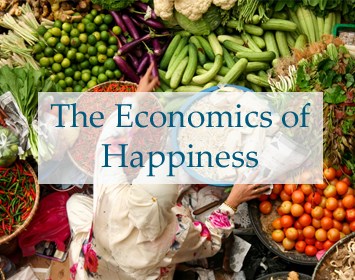Inauguration 2017 Special Coverage w/ Angela Davis, Naomi Klein, Ralph Nader & More
Menu

Special coverage in the Trump Era
From Public Citizen's Corporate Presidency site: "44 Trump administration officials have close ties to the Koch brothers and their network of political groups, particularly Vice President Mike Pence, White House Legislative Affairs Director Marc Short, EPA Administrator Scott Pruitt and White House budget director Mick Mulvaney."
Dark Money author Jane Mayer on The Dangers of President Pence, New Yorker, Oct. 23 issue on-line
Can Time Inc. Survive the Kochs? November 28, 2017 By Jane Mayer
..."This year, among the Kochs’ aims is to spend a projected four hundred million dollars in contributions from themselves and a small group of allied conservative donors they have assembled, to insure Republican victories in the 2018 midterm elections. Ordinarily, political reporters for Time magazine would chronicle this blatant attempt by the Kochs and their allies to buy political influence in the coming election cycle. Will they feel as free to do so now?"...
"Democracy in Chains: The Deep History of the Radical Right’s Stealth Plan for America" see: our site, and George Monbiot's essay on this key book by historian Nancy MacLean.
Full interview with The New Yorker’s Jane Mayer March 29, 2017, Democracy Now! about her article, "The Reclusive Hedge-Fund Tycoon Behind the Trump Presidency: How Robert Mercer Exploited America’s Populist Insurgency."
Democracy Now! Special Broadcast from the Women's March on Washington
The Economics of Happiness -- shorter version
Local Futures offers a free 19-minute abridged version of its award-winning documentary film The Economics of Happiness. It "brings us voices of hope of in a time of crisis." www.localfutures.org.
What's New?
August 04, 2009
For the Sixty-Fourth Time: No More Nuclear War. Reflections on Hiroshima and Nagasaki in Our World
(excerpts)
..."When I was little, in preparation for those dates -- and in this we were truly a minority of a minority in this country -- we showed films documenting the aftermath of the atomic bombings. To this day, I can remember threading our old 16mm projector and then watching the shocking, shaky, grainy, black-and-white footage of ruined cities and ruined bodies filling the living room wall as one of those somber male over-voices narrated the facts.
"So now, as the 64th anniversary of so many deaths approaches and thinking the unthinkable remains incomprehensibly in vogue, it seems worth the bother to recall one more time just what it means for the unthinkable to become reality.
The Death Count
"In Hiroshima, Little Boy's huge fireball and explosion killed 70,000 to 80,000 people instantly. Another 70,000 were seriously injured. As Joseph Siracusa, author of Nuclear Weapons: A Very Short Introduction, writes: "In one terrible moment, 60% of Hiroshima… was destroyed. The blast temperature was estimated to reach over a million degrees Celsius, which ignited the surrounding air, forming a fireball some 840 feet in diameter."
"Three days later, Fat Man exploded 1,840 feet above Nagasaki, with the force of 22,000 tons of TNT. According to "Hiroshima and Nagasaki Remembered," a web resource on the bombings developed for young people and educators, 286,000 people lived in Nagasaki before the bomb was dropped; 74,000 of them were killed instantly and another 75,000 were seriously injured.
"In addition to those who died immediately, or soon after the bombings, tens of thousands more would succumb to radiation sickness and other radiation-induced maladies in the months, and then years, that followed...
..."The unthinkable is still under consideration -- even as the Obama administration takes its first steps in the right direction. In an April speech in Prague, President Obama publicly embraced the goal of seeking "the peace and security of a world without nuclear weapons." In its wake, his administration has begun taking still quite modest but potentially important steps towards that goal, including: renewed talks with Russia over mutual nuclear reductions, conversations initiated in the Senate about jump-starting the ratification of the Comprehensive Test Ban, stalled these last 10 years, and of negotiations for the also stalled Fissile Material Cutoff Treaty, imagined as an internationally verified ban on the production of nuclear materials for weapons.
"Right now, however, the American nuclear landscape -- little acknowledged or discussed -- remains grimly potent. According to the authoritative Bulletin of the Atomic Scientists, the United States still maintains a nuclear stockpile estimated at 5,200 warheads -- of which approximately 2,700 are operational (with the rest in reserve), while the Obama administration will spend more than $6 billion on the research and development of nuclear weapons this year alone..."
Read full article here.
Frida Berrigan is Senior Program Associate at The New America Foundation's Arms and Security Initiative. See: http://www.fpif.org/
See our archival section on Hiroshima-Nagasaki.
Our personal WLOE connection with Hiroshima was Satomi Oba, anti-nuclear peace activist, Director of Plutonium Action Hiroshima, a tireless worker for peace and international cooperation. Sorely missed by friends and colleagues around the world.
Visit the Hiroshima Peace Museum at their site.

